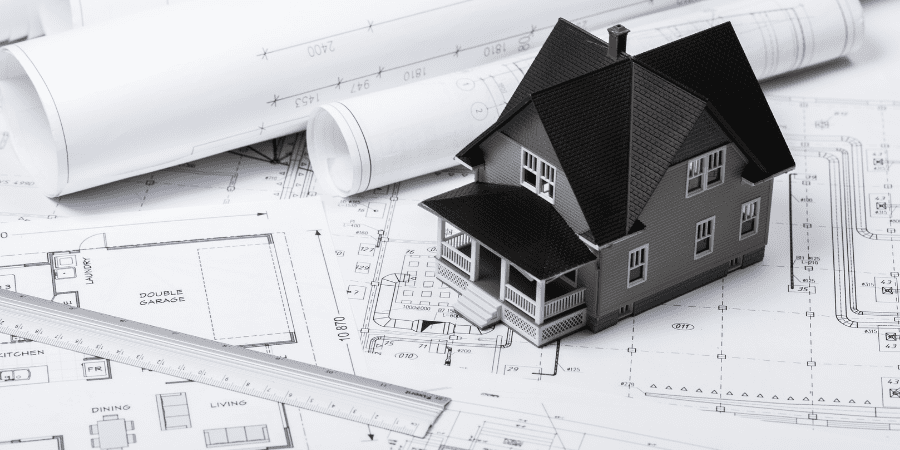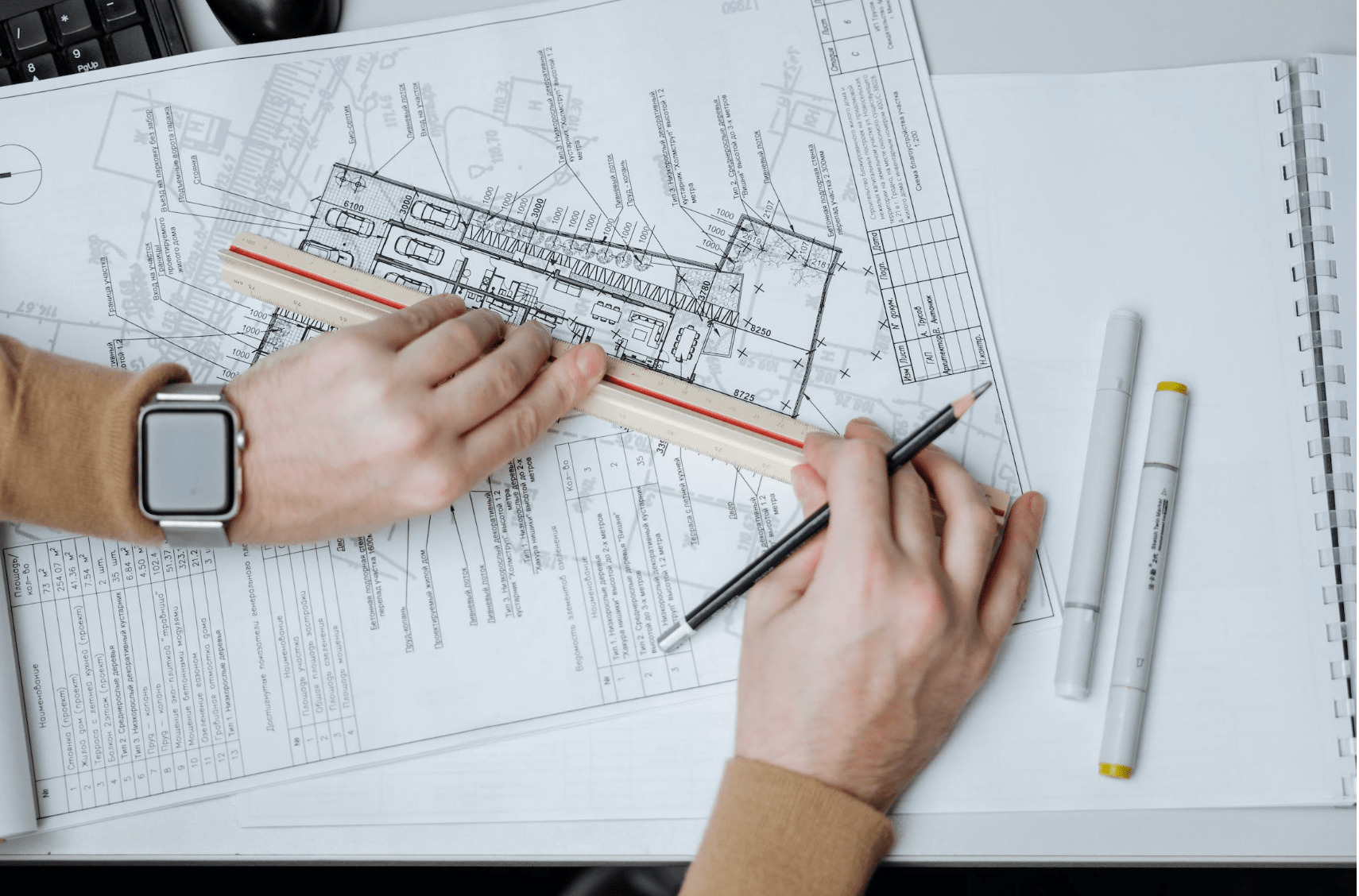Architect Career Path: Competencies, Education, and Advancement Guide
Architect Career Path: Competencies, Education, and Advancement Guide
Blog Article
Comprehending the Diverse Career Paths Available for Aspiring Architect
As an aspiring Architect, you have a globe of job paths awaiting you. Each course supplies one-of-a-kind challenges and possibilities to use your imagination and technological knowledge. Whether you're attracted to traditional architecture or the subtleties of sustainable style, there's a specific niche that aligns with your interests. Comprehending these varied alternatives can form your specialist journey, however which instructions will you select to explore first?
Traditional Design: Designing Structures and Frameworks
Typical architecture concentrates on creating buildings and structures that mix capability with aesthetic appeal. As you explore this area, you'll appreciate the intricate equilibrium in between kind and objective. You'll find out to attract inspiration from historical styles, including aspects like proportion, materials, and craftsmanship. Your styles can mirror cultural heritage, showcasing neighborhood practices while meeting contemporary requirements.
You'll create skills in drafting, model-making, and site evaluation, permitting you to envision and connect your concepts effectively. Involving with customers, you'll need to comprehend their vision and translate it right into feasible layouts.
Moreover, constructing codes and sustainability practices are essential in your job, ensuring your frameworks are eco friendly and secure. As you grow in your profession, you'll discover possibilities in domestic, industrial, or perhaps remediation tasks, each offering unique difficulties. Embracing typical design paves the method for a meeting job that pays tribute to the past while shaping the future.
Urban Preparation: Shaping Neighborhoods and Public Spaces
As a hopeful Architect, you can play a vital duty as a metropolitan coordinator, changing exactly how areas engage and function. By utilizing neighborhood interaction approaches, you'll guarantee that locals have a voice fit their environment. Plus, incorporating lasting layout concepts will certainly help develop spaces that not just satisfy today's needs but also safeguard the future.
Role of Urban Planners
While several might assume of architects as the single enthusiasts behind structures, metropolitan planners play a crucial function in shaping the broader landscape of areas and public areas. They analyze land usage, zoning legislations, and community requires to create lasting atmospheres that enhance top quality of life. By teaming up with different stakeholders, you'll assist create parks, transportation systems, and houses that promote social communication and accessibility. Urban planners also concentrate on ecological factors to consider, making certain that developments incorporate green rooms and assistance biodiversity. Your experience in spatial design and neighborhood characteristics enables you to picture future development while protecting cultural heritage. In this vital duty, you'll directly affect exactly how people experience their environments, making every job a chance for positive modification.
Community Engagement Strategies
Reliable neighborhood involvement techniques are vital for urban organizers to assure that the voices of locals are listened to and valued in the preparation procedure. To promote meaningful discussion, you need to focus on open forums and workshops where community participants can share their ideas and concerns. By actively paying attention and incorporating responses, you'll create rooms that show the neighborhood's demands, eventually leading to more sustainable and effective metropolitan atmospheres.
Lasting Style Principles
When creating urban areas, incorporating sustainable layout concepts is vital for developing environments that grow both ecologically and socially. You ought to begin by concentrating on energy efficiency, using materials that decrease waste and promote recycling. Take into consideration incorporating environment-friendly spaces, like parks and gardens, to boost biodiversity and enhance air quality. Promoting walkability and public transport can minimize dependence on cars and trucks, cultivating a healthier neighborhood.
Creating with water conservation in mind is likewise crucial-- consider rainfall gardens and absorptive surface areas to handle stormwater. Involving community participants during the preparation procedure warranties that the areas you produce satisfy their needs and encourage social interaction. By accepting these principles, you'll add to vibrant, lasting urban landscapes that profit everyone.

Landscape Design: Developing Lasting Outdoor Atmospheres
As you explore landscape architecture, you'll uncover important layout concepts that create beautiful and useful outdoor spaces. Lasting techniques play a vital duty in making sure these environments prosper while reducing environmental effect. And also, you'll find a variety of career chances that permit you to make a genuine difference in exactly how people interact with nature.
Style Concepts in Landscape
Recognizing design principles in landscape style is necessary for producing sustainable exterior environments that harmonize with nature. You'll require to contemplate elements like scale, percentage, and balance to ensure your designs feel natural and inviting. Furthermore, pay attention to seasonal modifications, designing with products that match the surroundings year-round.
Sustainable Practices Introduction
Sustainable techniques in landscape architecture not only concentrate on looks however also focus on environmental health and source conservation. By integrating native plants, you enhance biodiversity and lower the demand for chemical plant foods and chemicals. Applying reliable watering systems helps save water and reduces runoff, shielding nearby communities. You can develop rooms that promote soil wellness, such as utilizing organic products and exercising permaculture concepts. Furthermore, including eco-friendly facilities, like rain yards and permeable sidewalks, aids in stormwater management and lowers city warm. When you develop outdoor atmospheres with sustainability in mind, you add to a much healthier earth and supply rooms that promote community link. Ultimately, these practices guarantee your layouts benefit both individuals and the setting for many years ahead.
Occupation Opportunities Exploration
With a solid foundation in sustainable methods, landscape style offers a variety of profession courses that allow you to make a meaningful impact on the environment. Urban coordinators usually team up with landscape engineers to create eco-friendly spaces in urban settings, enhancing city livability. If you're passionate regarding education, take into consideration ending up being a landscape architecture teacher, inspiring future generations.
Sustainable Layout: Concentrating On Eco-Friendly Practices
As you explore your career in architecture, accepting environment-friendly techniques can set you apart in a competitive area. Lasting style concentrates on producing structures that lessen environmental influence while boosting resident well-being. By integrating sustainable materials, energy-efficient systems, and sustainable building methods, you'll add to a greener future.
Begin by gaining knowledge of eco-friendly qualifications like LEED or BREEAM, which can strengthen your qualifications. Consider exactly how all-natural light, air flow, and thermal performance can optimize style. Collaborate with designers and environmental consultants to innovate services that decrease waste and preserve sources.
Don't fail to remember the importance of community participation-- engaging local stakeholders can influence layouts that balance with the atmosphere. As clients progressively prioritize sustainability, your click this site experience in environmentally friendly methods will certainly not only bring in jobs however likewise meet your enthusiasm for accountable architecture. Embrace this essential aspect of the occupation, and watch your career flourish.
Historic Conservation: Safeguarding and Bring Back Cultural Heritage
While you begin on your building trip, take into consideration the essential duty of historical preservation in preserving our cultural heritage. This field concentrates on the defense and remediation of substantial structures, sites, and structures that inform the tales of our past. By taking part in historic conservation, you'll help secure the architectural legacy that shapes community identification.
As a historical preservation Architect, you'll examine historical significance and examine the condition of structures. You'll function carefully with preservationists and historians to assure genuine restoration methods are utilized. This job course enables you to mix imagination with research, enabling you to create remedies that appreciate initial products and craftsmanship.
Your work not only adds to sustainability by reusing existing structures yet also fosters a sense of satisfaction within neighborhoods. Welcoming this course will certainly aid you come to be a guardian of background, protecting the tales and aesthetics that improve our lives.
Inside Style: Enhancing Indoor Spaces
Historical preservation and indoor architecture both share a commitment to boosting the constructed atmosphere, yet they concentrate on various elements. While historic conservation emphasizes keeping a framework's cultural and historic value, interior design nos in on optimizing interior rooms for performance and looks.
As an aspiring Architect, you'll discover that interior design allows you to mix imagination with technological abilities. You'll make rooms that not just look great but additionally advertise comfort and performance. This area entails recognizing how light, shade, and materials engage within a room, impacting state of mind and functionality.
You'll deal with numerous jobs, from domestic homes to business workplaces, making sure that each atmosphere meets the requirements of its occupants. By focusing on customer experience, you can transform interiors right into inspiring and useful areas, making a considerable effect on how people communicate with their environments. Welcome the possibility to enhance interior settings and shape the way individuals function and live.
Industrial Style: Merging Performance With Looks
Commercial layout plays an essential function in producing products that effortlessly blend appearances with performance, making certain that what you use everyday is not only visually attractive however also useful. As an ambitious Architect, you might engage on your own in this area, concentrating on discover this info here developing whatever from furniture to consumer electronics. Your work involves comprehending individual requirements, products, and making procedures, permitting you to develop innovative services that boost daily experiences.
In industrial design, you'll usually team up with marketing experts, engineers, and makers, ensuring that your layouts are not just gorgeous yet additionally possible. You'll discover to stabilize type and feature, prioritizing functionality without sacrificing design. By sharpening your skills in laying out, 3D modeling, and prototyping, you'll be fully equipped to bring your concepts to life. This profession course offers a dynamic atmosphere where creativity satisfies usefulness, making it a gratifying selection for designers interested in forming the products of tomorrow.
Regularly Asked Concerns
What Educational Credentials Do I Required to Become a Designer?
To come to be an architect, you'll require a professional degree in architecture, typically a Bachelor's or Master's. Furthermore, you'll have to finish an internship and pass the Architect Registration Evaluation to practice legitimately.
Are There Qualification Needs for Various Architectural Occupation Paths?
Yes, there're qualification requirements for numerous architectural paths. Architect. You'll need to pass examinations, total internships, and occasionally seek specialized training, relying on your selected focus, like landscape design, city style, or historic preservation
What Software Program Abilities Are Essential for Architects Today?

Exactly How Can I Gain Practical Experience While Studying Style?
You can get useful experience by interning at building companies, taking part in layout competitions, volunteering for neighborhood jobs, or collaborating with schoolmates on real-world jobs. These opportunities boost your skills and build useful links in the sector.
What Job Opportunities Exist Outside Typical Design Firms?
You can discover various job chances outside conventional design companies, like city preparation, indoor style, landscape style, building administration, genuine estate growth, or perhaps roles in sustainability consulting. Each deals special challenges and incentives.
Whether you're drawn to typical style or the nuances of sustainable style, there's a niche that straightens with your rate of interests.When making urban areas, incorporating sustainable layout principles is essential for creating atmospheres that grow both ecologically and socially.As you check out landscape architecture, you'll uncover necessary style concepts that create beautiful and useful exterior rooms.Comprehending layout concepts in landscape architecture is additional resources essential for developing sustainable exterior atmospheres that integrate with nature.In industrial style, you'll commonly team up with marketing professionals, designers, and producers, guaranteeing that your designs are not only attractive but additionally viable.
Report this page